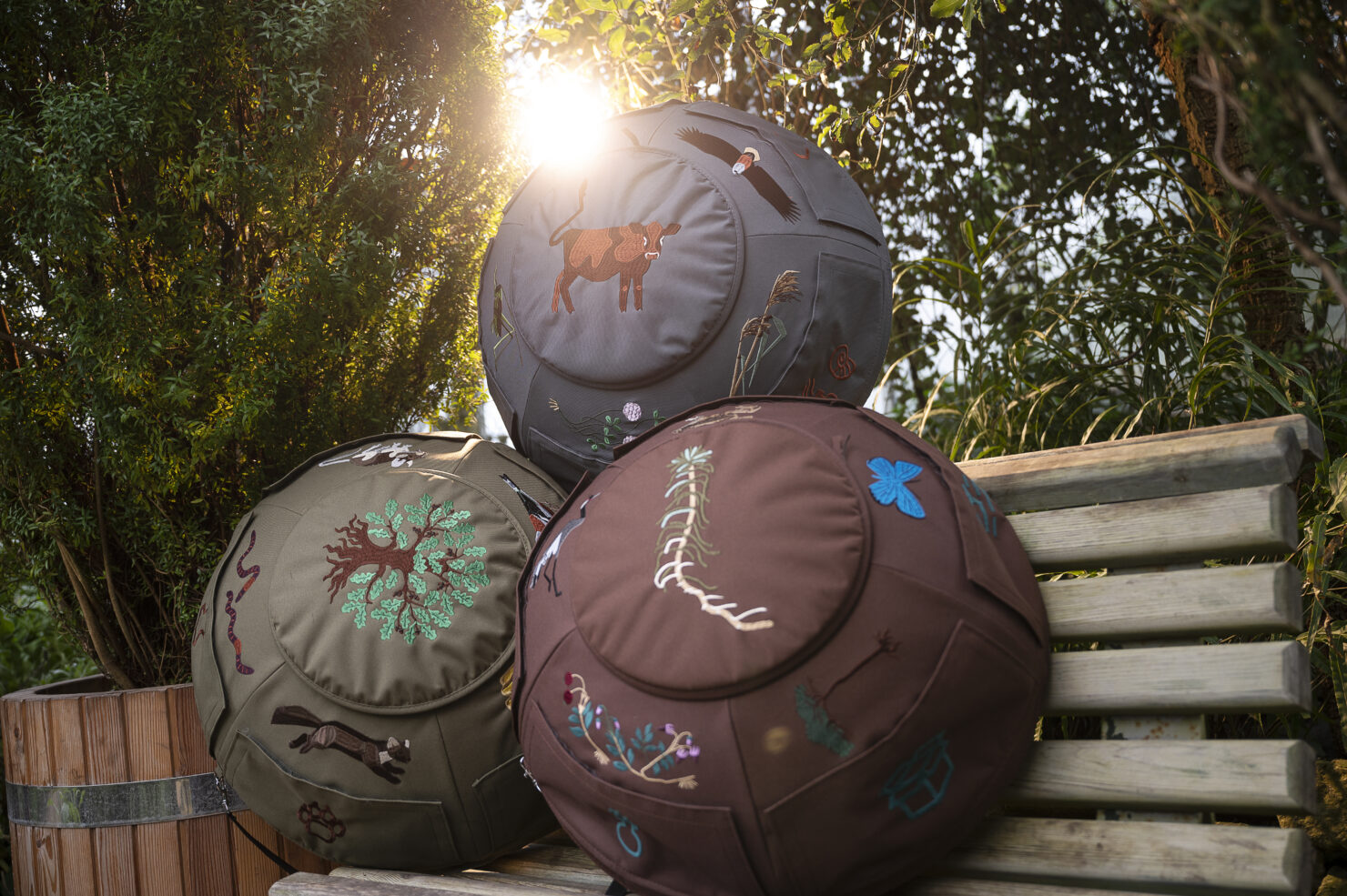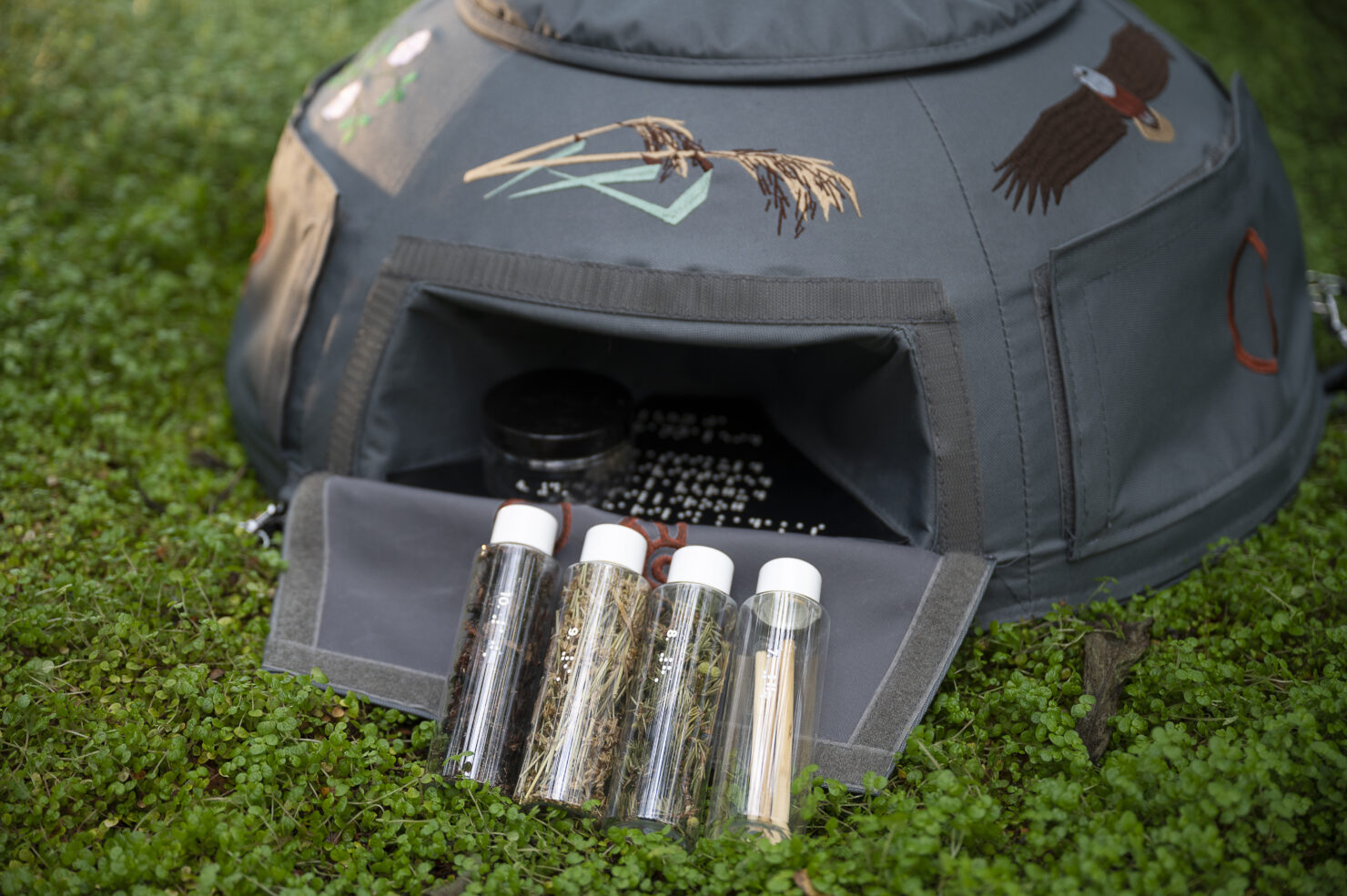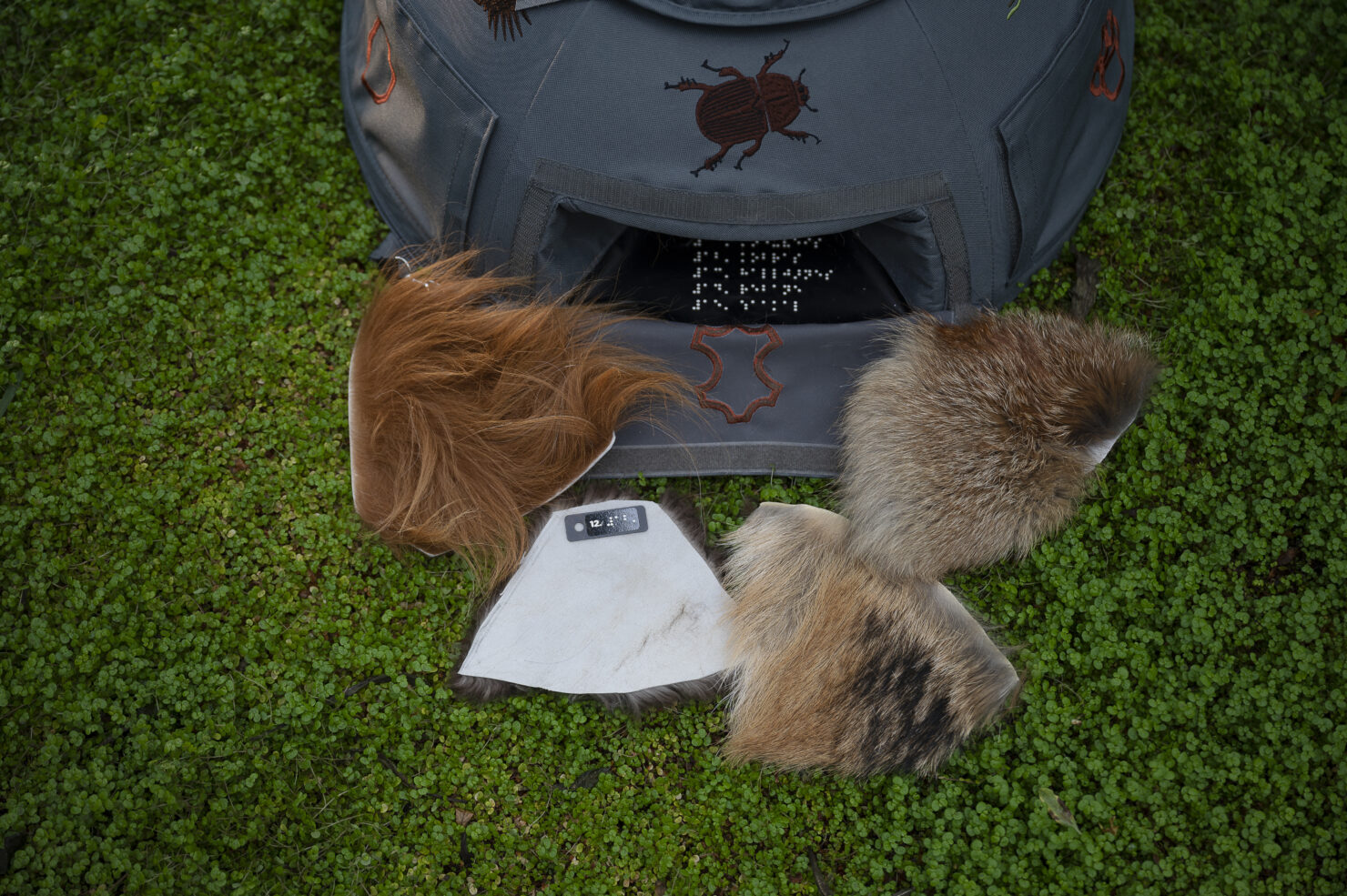2021 | KeskkonnaametGraphicEnvironmentalStrategicPrinted MediaExperience DesignUser Research
Educase – educational tool for learning with disabilities

One of the basic needs of children is to experience, discover and learn, but there are many children who, due to their visual or hearing impairments are unfairly not able to fully do so.
When the Environmental Board announced that it wanted to create a new kind of educational material for children with hearing and visual impairments that would help them to establish connections with Estonian nature, this challenge immediately aroused our interest and we felt that this was exactly the task that needs to be solved with empathic design disciplines.
Our main challenge was building real empathy.
How to create empathy between a designer and children with visual and hearing impairments. What made the task more challening, is the fact that the level of intelligence of children with disabilities varies. To this end, we involved special educators in our process. Their knowledge and daily contact with children helped us understand the abilities and limits of children with disabilities.
We also received a lot of advice from the Finnish Federation of the VIsually Impaired and teachers with special pedagogical training, Kairi Ilmets and Raili Loit, who advised and immediately tested the solutions with children.
Meet Educase. Educational learning tool for children with visual and hearing disabilities.



With a clear goal to teach children with visual and hearing impairments to truly feel what nature surrounding us has to offer, we decided to design a hemispherical case that contains a set of elements found in the nature.

These elements can be discovered and experienced by children together with the teacher. It gives students the opportunity to discover natural textures, sounds, smells and draw connections between the objects.

In addition, a comprehensive methodological guide was created for the teacher, which explains the contents of the case and shows different ways to bring the contents to the students.
The case can be used both in classroom and on forest paths.
Let’s look inside the case.








Tactile pictures of nature with interesting facts and QR codes for hearing sound and seeing the information in sign language.
The contents of the case have been created in collaboration with naturalist Arne Ader, who traveled through three selected environments and compiled an overview of the plants, soils and animals actually found in Estonian nature.

In the case of the format of the study material, we followed the principle of universality and designed the content created by Arne to be consumable by both visually and hearing impaired children. Each decision was confirmed by children with special needs in our test groups. This is the only way we could create a study material that really works.
These cases are made to travel across land and senses.
36 Educases are currently in use all over Estonia, and several neighboring countries have shown great interest in the study material created. As a result, the contents of the cases are currently being adapted to nature and the texts are being translated, and more children will be reached soon.
Team
- Peep Jürmann – Project lead
- Mart Lankots – Production
- Sandra Goroško – Production design, modeling
- Alan Reiss – Production
- Anastassia Tšepaikina – Illustrator
- Aivo Kallas – Photographer
- Kaarel Vahtramäe – Designer
- Jaak Peep – Graphic Design
- Nele Volbrück – Project Manager
Partners
- Eero Ehala – Product Design
- Arne Ader – Nature Specialist, photography
- Raili Loit – Special Education Specialist
- Kairi Ilmets – Special Education Specialist
- Luisa Tõlkebüroo – Translations
- Keskkonnaamet, Margit Turb – Client
Awards
- Kuldmuna – Experience Marketing (Bronze)
- Baltic Best – Design Craft & Package Design (Gold)
- European Design Awards – Printed Miscellaneous (Finalist)
- Estonian Association of the Blind – Improving the quality of life of visually impaired people (Act of the Year 2021)
- Kyiv International Advertising Festival – Positive Change – non-profit (Shortlisted)
- ADC*Estonia – Economic, social, regional and interdisciplinary cooperation (Bronze)
- ADC*Estonia – Sustainable development, research development and technological progress (Bronze)
- ADC*Estonia – Cultural and linguistic diversity (Gold)
- ADC*Estonia – Grand Prix (Life changing design)
- ADC*Europe – Design: Any Other (Silver)